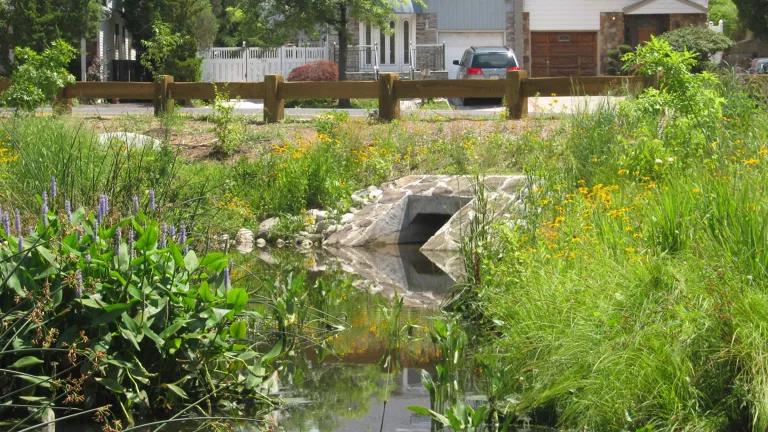Creating Clean Water Cash Flows: Developing Private Markets for Green Stormwater Infrastructure in Philadelphia
Urban cityscapes are an unequal mix of preserved green space and concrete. For every park, there are blocks of sidewalks, streets and skyscrapers. As rain washes over all that paved land, polluted stormwater runoff causes urban flooding and dumps nearly 10 trillion gallons of dirty water into our nation's coasts and waterways annually. To turn back the tides of polluted stormwater, many cities are launching ambitious plans to develop green infrastructure -- effectively unpaving city land and using practices that help rain absorb and be better used near where it falls.
These measures can be beneficial for cities aiming to meet Clean Water Act mandates. Greener solutions also come with a far more manageable price tag than the billions more that can be spent on grey infrastructure. However, cities developing green infrastructure programs face challenges financing those programs entirely through traditional means such as municipal bonds or federal and state funds. With the federal "Clean Water Needs Survey" identifying over $100 billion in needed infrastructure investment over the next twenty years to address stormwater and sewage overflows, the time for creating private markets for green infrastructure has arrived.
Perceiving the opportunity to create markets well-suited to green infrastructure -- NRDC, the Nature Conservancy and EKO Asset Management Partners joined forces to create "NatLab," the Natural Infrastructure Finance Laboratory. NatLab conducted its first pilot in Philadelphia, a city that over the next 25 years plans to transform at least 9,654 impervious acres into "greened acres" that capture runoff onsite. This sustainable solution is the city's primary approach to reducing sewer overflows – the centerpiece of a plan that is expected to cost approximately $2.4 billion. In "Creating Clean Water Cash Flows" and "Greening Vacant Lots," NatLab identifies ways cities can spur private green infrastructure investment on a range of urban lands.


